Network Map URLs
 |
Internet2 Net infrastructure, connectors, and primary participants: Internet2: https://noc.net.internet2.edu/i2network/advanced-layer-2-service/maps-documentation/al2s-connectors2.html |
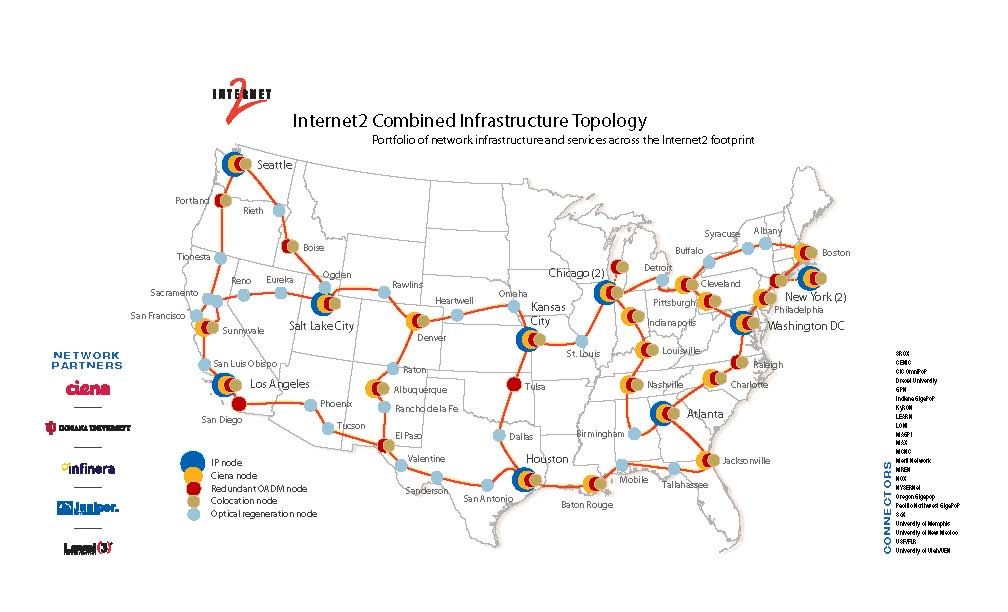 |
Internet2 Network Operations Center, Ciena Infrastructure, Engineering map, IP network, IPv6 network, and Participant map: NOCs: http://noc.net.internet2.edu/i2network/maps-documentation/maps.html |
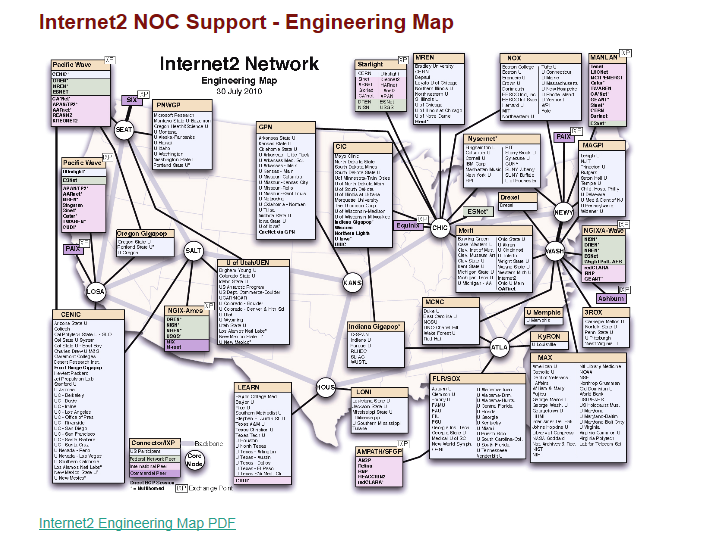 |
Internet2 Detailed engineering map : Internet2 Engineering Map: https://noc.net.internet2.edu/i2network/advanced-layer-2-service/maps-documentation/al2s-connectors2.html |
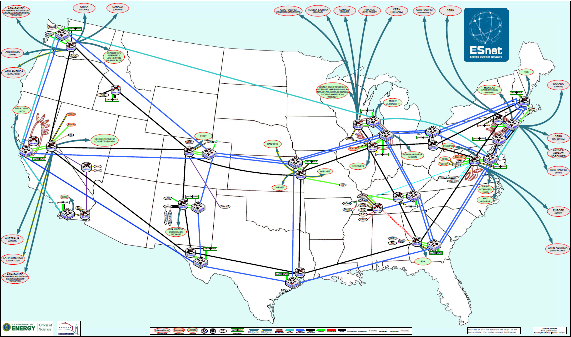 |
Department of Energy: Energy Sciences Network (ESnet): ESnet provides DOE scientists with comprehensive connectivity to the global Internet and high-bandwidth access to DOE sites and primary science collaborators, including research and education (R&E) networks in the US, Europe, Asia Pacific, and elsewhere. The current ESnet backbone, called ESnet4, has architecture tailored to meet the DOE’s large-scale science data needs. Its national 10 Gbps optical circuit infrastructure provides world-wide connectivity through multiple high-speed peering points. ESnet shares its optical network with Internet2, a U.S. national R&E network, on a dedicated national fiber infrastructure. ESnet: http://www.es.net/assets/OperationsNOC/SanitizedESnetBackbone.pdf |
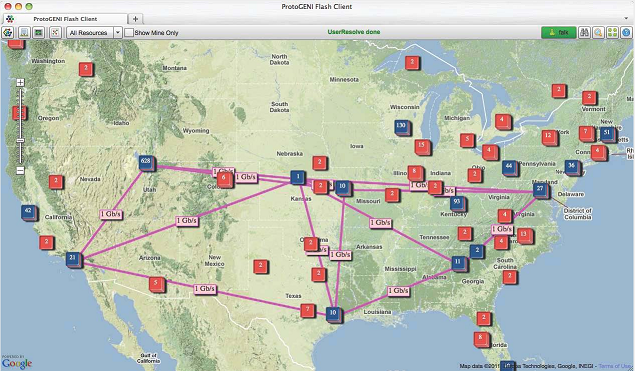 |
GENI, a virtual laboratory for exploring future internets at scale, creates major opportunities to understand, innovate and transform global networks and their interactions with society. Dynamic and adaptive, GENI opens up new areas of research at the frontiers of network science and engineering, and increases the opportunity for significant socio-economic impact. GENI will:
GENI Map: http://www.geni.net/wp-content/uploads/2015/06/GENI-MAP-5-1.jpg |
| StarLight is a 1GigE and 10GigE switch/router facility for high-performance access to participating networks, and a true optical switching facility for wavelengths. Since summer 1501, StarLight management and engineering has been working with the international academic and commercial communities to create a proving ground in support of grid-intensive e-Science applications, network performance measurement and analysis, and computing and networking technology evaluations. StarLight access to sign in for network configuration: https://www.startap.net/starlight/ENGINEERING/ |
The PNWGP is a state of the art facility for delivering advanced Internet services and applications and provides connectivity to next generation, high-performance national networks such as National LambdaRail and Internet2, as well as federal mission networks such as DREN and ESNet. PNWGP offers OC-48 (2.4Gbps) packet-over-sonet (POS) services to partners and 10G to Internet2.Current PNWGP connections include:
Pacific Northwest GigaPoP: https://pnwgp.net/network-services/ |
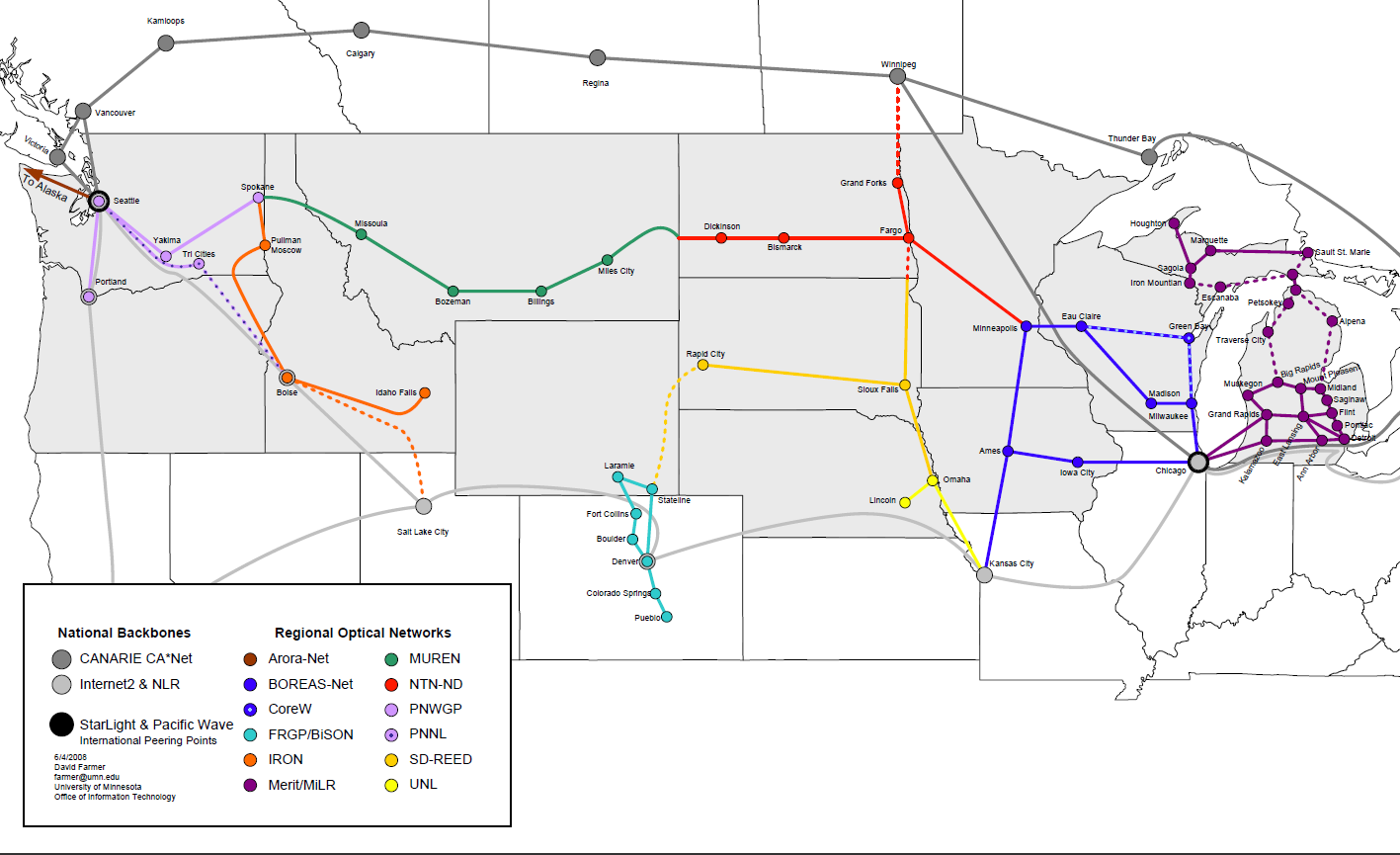 |
The Northern Tier Network Consortium NTNC) is currently creating itself as a formal organization initially as a “project” of Internet2 initiative. It is planning a robust research network connection for educational institutions in the upper-northwestern states by creating a national backbone route across the northern U.S. – the Northern Tier. Northern Tier Network Consortium: http://www.ntnc.org/images/maps/NTNC_map_2017.pdf |
IRNC Networks
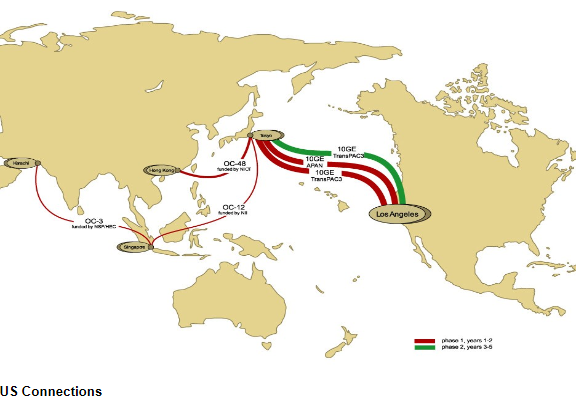 |
The primary engineering goal of TransPac3 is to continue to build on a long history of technical collaboration between APAN and IU to provide next-generation, highly functional, flexible, and reliable connectivity between Asia and US research and education networks and their users in a wide range of applications with a wide range of technical and logistical requirements. Initial deployment provides two 10Gbps Ethernet circuits between the US and Japan, one provided and funded by NICT-Japan and the other by the NSF TransPac3 IRNC award. Both partners will operate these circuits in close cooperation, as they have done for TransPAC2. Our plan for continued growth is to implement the best option available at the 3-year mark of the project, at least a doubling of capacity or, depending on technology availability and cost, 40/150Gbps. TransPac3 Topology: https://news.iu.edu/stories/2020/10/iu/releases/01-international-networks-build-infrastructure-across-atlantic.html |
| The America Connects to Europe Project (ACE) is a collaboration of Indiana University (IU) as the lead institution in cooperative partnership with DANTE, NYSERNet, and Internet2. The ACE Project provides a powerful infrastructure of multi-gigabit bandwidth and services connecting researchers in the US with their counterparts in Europe. ACE Topology: https://internationalnetworks.iu.edu/ |
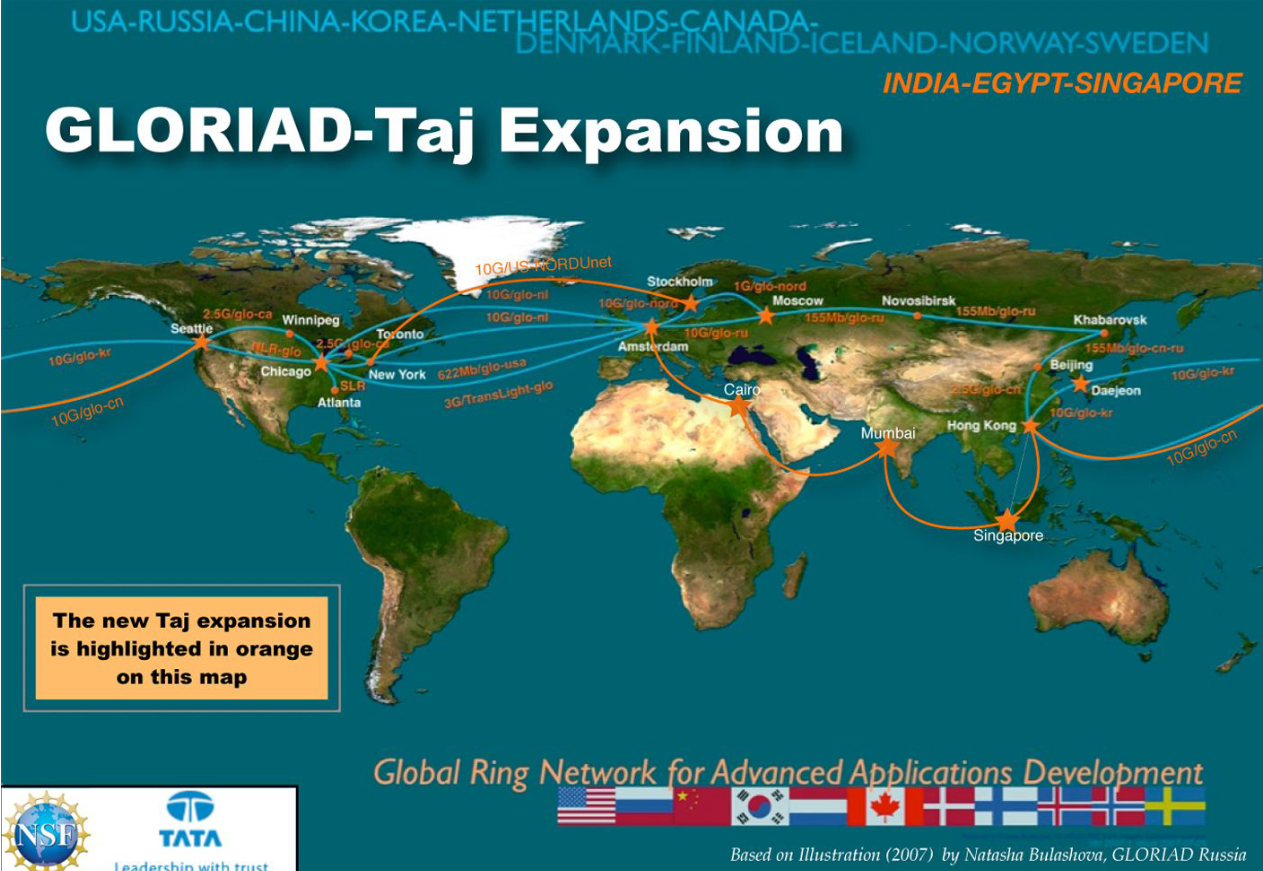 |
GLORIAD (Global Ring Network for Advanced Application Development) is a high-speed computer network connecting scientific organizations in Russia, China, United States, the Netherlands, Korea and Canada, India, Singapore, Vietnam, and Egypt. GLORIAD, sponsored by the US National Science Foundation, is a consortium of science organizations and Ministries in Russia, the Chinese Academy of Sciences, the Ministry of Science and Technology of Korea, the Canadian CANARIE network, the national research network in The Netherlands SURFnet and has some telecommunications services donated by Tyco Telecommunications. GLORIAD provides bandwidth of up to 10 Gbit/s via OC-192 links, e.g. between KRLight in Korea and the Pacific NorthWest GigaPOP in the United States. The National Science Foundation (NSF)-funded Taj network has expanded GLORIAD, wrapping another ring of light around the northern hemisphere for science and education. Taj now connects India, Singapore, Vietnam and Egypt to the GLORIAD global infrastructure and dramatically improves existing U.S. network links with China and the Nordic region. GLORIAD/TAJ:http://www.nsf.gov/news/mmg/media/images/gloriad1_h.jpg |
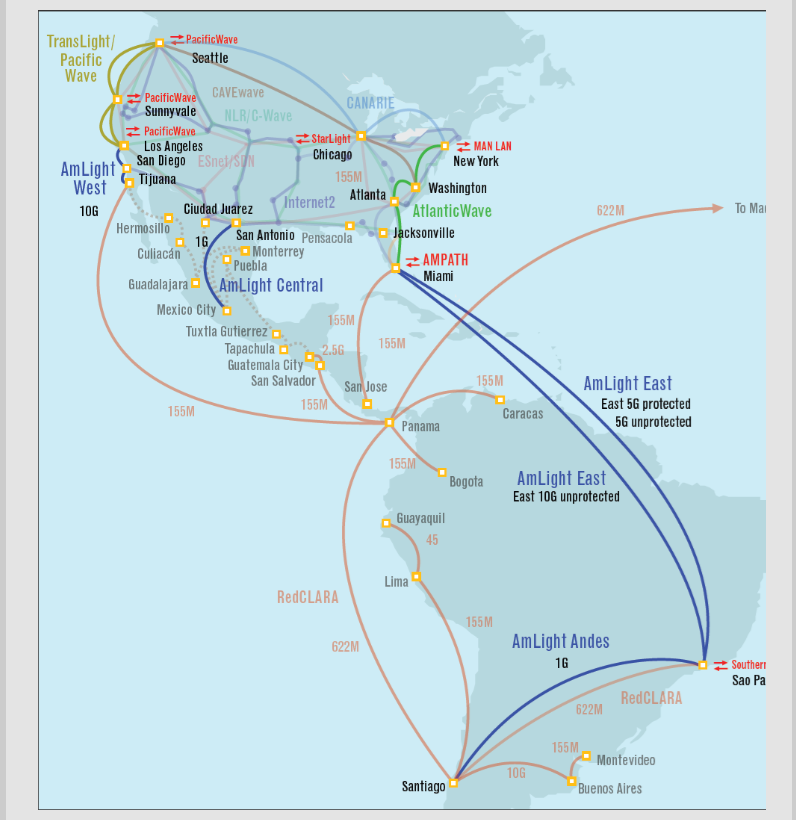 |
America’s Lightpaths, AmLight, enables research and education amongst the people of the Americas. The enablement is through the operation of production infrastructure for communication and collaboration between the U.S. and Western Hemisphere science and engineering research and education communities. AmLight International Exchange Point: https://www.amlight.net/?page_id=11 |

